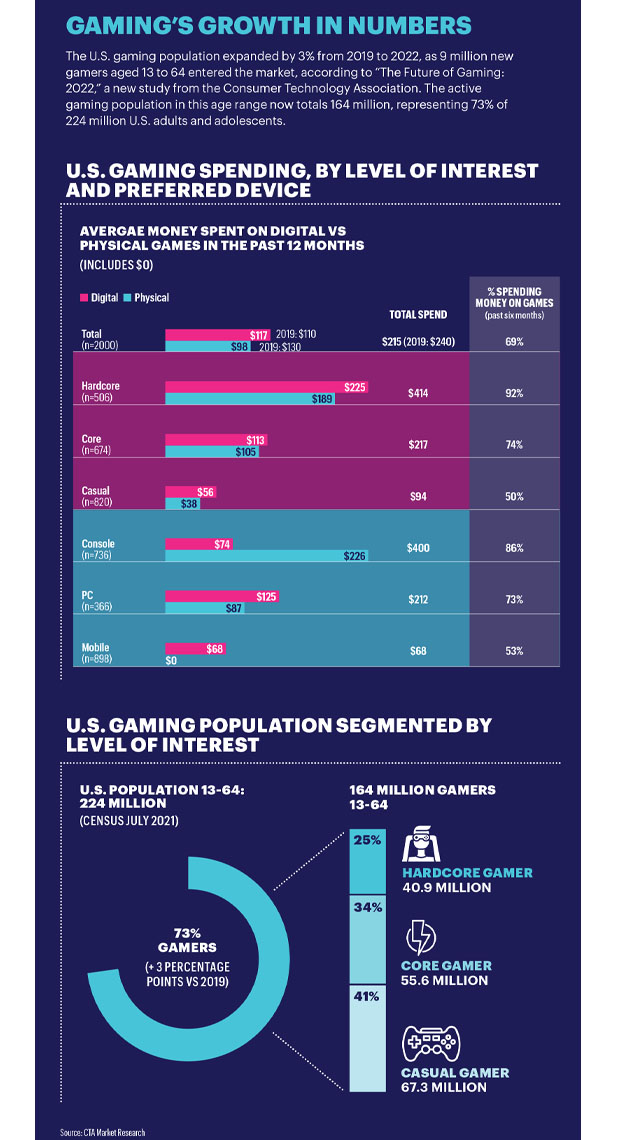65% of gamers expect gaming to become more social in the next five years as gaming becomes more virtual, driven by metaverse innovation.
Make Way for the Metaverse
Hardcore gamers and young people are also entering new digital realms as the early stage metaverse continues to evolve. An expected 62 million (or 37% of gamers) now live out gaming experiences in the metaverse, with 38 million gamers self-identifying as metaverse enthusiasts, CTA’s gaming study also revealed.
Many consumers experienced the metaverse for the first time through gaming as their initial entry point. Fortnite emerged as an early leader in this nascent field through its combination of customization; major IP brand licensing with Marvel, as just one example; and the creation of unique in-game experiences, such as concerts from artists including Ariana Grande.
Meanwhile, Roblox, another metaverse pioneer, saw 57.8 million members on its online gaming platform, a 23% jump from last year, according to the company’s September 2022 metrics report.
Gamers foresee a future that includes increased incorporation of augmented and virtual reality to build even richer metaverse experiences, with nearly 30% saying they plan to buy a VR/AR headset in the next 12 months, CTA’s study revealed. That should come as no surprise as the 41 million Americans who identify as active and avid gamers are also serious investors in technologies that raise the challenge and complexity of content. Gamers continue to buy out retailer inventories of immersive-enabling hardware, such as 8K televisions and soundbars.
More than half of U.S. gamers already use televisions with 4K or higher quality, with 36% planning to upgrade to an 8K in the next 12 months. Some 40% will purchase gaming-caliber headsets with microphones, soundbars or surround-sound speakers and more to boost their experiences.
As the metaverse evolves in the coming years, from visual perception to more tactile experiences, haptic technologies — like the vests and gloves on display at CES 2022 from exhibitors Owo and Skinetic — will also become ubiquitous pieces of gaming equipment helping users to achieve full immersion. A Ready Player One-like gaming future may truly bring sci-fi closer to reality.
